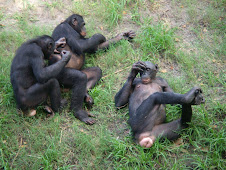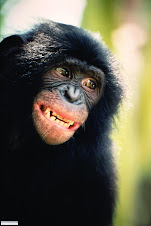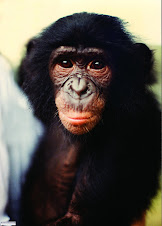

 These awesome frogs are featured on a calender produced by the Amphibian project coordinated by several major international conservation groups and Zoos worldwide. Globally, amphibians are severely threatened by various threats including loss of habitat, pollution, climate change, and an infectious fungus called chytridiomycosis or "chytrid" (pronounced "kit-rid")
These awesome frogs are featured on a calender produced by the Amphibian project coordinated by several major international conservation groups and Zoos worldwide. Globally, amphibians are severely threatened by various threats including loss of habitat, pollution, climate change, and an infectious fungus called chytridiomycosis or "chytrid" (pronounced "kit-rid")The first frog is a spiny-headed Treefrog, from cloud forests of central America. The male calls from pockets of water -- typically bromeliads or tree holes -- high up in the canopy. The female deposits her eggs just above the water line and when the tadpoles hatch, they wiggle free and drop into the water. The mother will return to the pool and lay unfertilized eggs, which her babies feed upon, and they become frogs in 60 days.
The second photograph is of an Ankafana Bright-eyed Frog from Madagascar. Lime-green, it blends with the foliage that it hides in during the day. The Bright-eyed frog is always found along streams in various habitats from degraded secondary to pristine primary forest. Luckily, this frog occurs in protected areas.
The last image is of the striking Australian Lace-lid Treefrog, with its unique eye camouflage, from North Queensland, Australia. It has disappeared from the uplands, but is still found at lower elevations, where it lives along fast-moving streams in the rainforest. The lace-lid was declared an endangered species in 1999, but the reason for its sharp decline is unknown.
Frogs are a diverse, beautiful group of animals that are important to ecosystems both for the prey (mostly insects) that they eat, and for being a food source for vertebrates. This represents a biological diversity crisis second only to the extinction of the dinosaurs.
Photos by B. Kubicki, P. Naskrecki, and J. Rowley













No comments:
Post a Comment